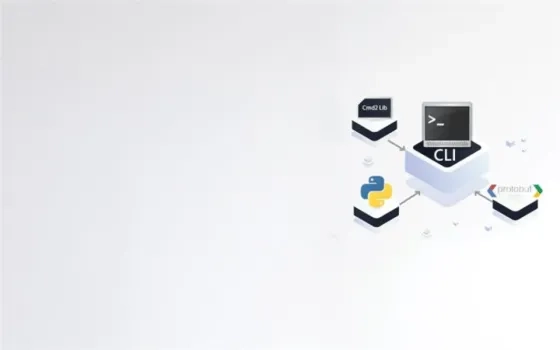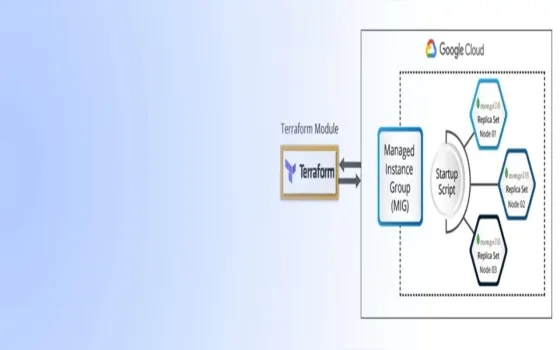DevOps has become a game-changer, allowing teams to work together more efficiently. But there’s a big concern: security often gets left behind.
This article is about why making security a part of DevOps is crucial and how to do it right.
We’ll explore why DevOps is important and why security matters in this context and give you an idea of what you can expect from this article about securing DevOps.
Challenges in DevOps Security
Here are the challenges in DevOps security:
- Neglecting Security Risks: Rapid development pace in DevOps can lead to overlooking security measures, leaving systems vulnerable to threats like data breaches and unauthorized access.
- Understanding Secure Practices: Bridging the gap between traditional security measures and the fast-paced DevOps environment requires educating teams on secure coding practices and integrating security seamlessly into the DevOps pipeline.
- The complexity of Modern Systems: With microservices, containers, and cloud-based architectures, the attack surface area expands, making it challenging to track and secure every component effectively.
- Cultural Shift: Organizations need a shared responsibility for security among all stakeholders, emphasizing a security-first mindset, implementing automated security checks, and continuous monitoring tools within the DevOps pipeline.
- Comprehensive Security Strategy DevOps security requires a comprehensive approach covering infrastructure, applications, and data, adapting to the dynamic nature of DevOps with regular security assessments, threat modeling, and staying updated with the latest security trends.
Best Practices for Secure DevOps Integration
Secure DevOps integration involves several vital practices to ensure that security is embedded throughout the software development lifecycle:
Shift-Left Approach: Embedding Security Early
The shift-left approach emphasizes integrating security practices from the initial stages of development. This involves:
- Early Risk Assessment: By including security considerations during the planning and design phases, potential risks can be identified and addressed before they are deeply integrated into the system.
- Security Training and Awareness: Educating development and operations teams about secure coding practices and potential security threats fosters a proactive and security-conscious mindset within the team.
Automated Security Testing and Validation
Automation is critical in a DevOps environment to continuously assess and validate the security of the system:
- Continuous Integration/Continuous Deployment (CI/CD): Implement automated security testing tools throughout the CI/CD pipeline. These tools detect vulnerabilities in code and configurations automatically, ensuring security checks are an integral part of the deployment process.
- Static and Dynamic Analysis: Employ static code analysis tools to identify codebase vulnerabilities and dynamic analysis for testing running applications and uncovering potential security issues.
Secure Infrastructure as Code (Iac) Practices
Securing the infrastructure through code-based configurations ensures consistency and security:
- Template and Configuration Security: Apply security best practices to infrastructure templates and configurations using Infrastructure as Code (IaC) tools. Regularly review and update configurations to adhere to security standards.
- Version Control and Auditing: Manage IaC scripts in version control systems and conduct periodic audits to track changes. This ensures that configurations remain secure and compliant over time.
Monitoring and Incident Response Within DevOps
Continuous monitoring and swift incident response are crucial components of a secure DevOps environment:
- Real-time Monitoring Implement robust monitoring tools to track system activities, detect anomalies, and trigger alerts in real-time. This enables immediate responses to potential security incidents.
- Automated Incident Response: Incorporate automated incident response mechanisms into the DevOps workflow. This could involve automated rollback procedures or swiftly isolating affected components to mitigate security issues.
Tools and Technologies for DevOps Security
The role of DevOps in Quality Assurance (QA) is vital for ensuring that software products meet high-quality standards while maintaining the rapid delivery cycles of DevOps. Integrating security into each stage of the DevOps pipeline is essential to enhance the overall quality and reliability of the software.
Overview of security tools for each DevOps stage
- Plan: Security begins with planning. Tools such as threat modeling software (like Microsoft Threat Modeling Tool) help identify potential security threats and risks during the planning phase, allowing teams to address security concerns preemptively.
- Develop: In the development phase, static analysis tools like SonarQube or Checkmarx assist in identifying security vulnerabilities and coding errors in the source code. Additionally, Dependency-Check tools help in scanning dependencies for known vulnerabilities.
- Build: During the build phase, security-focused plugins and integrations within CI/CD tools (e.g., Jenkins, GitLab CI) help run automated security tests and checks, ensuring that vulnerabilities are caught early in the process.
- Test: Security testing tools like OWASP ZAP or Burp Suite are used for penetration testing, vulnerability scanning, and assessing the security posture of applications. They aid in detecting and fixing vulnerabilities before deployment.
- Deploy Container security tools like Docker Security Scanning or Clair to help scan container images for vulnerabilities before deployment. Additionally, configuration management tools like Chef or Puppet ensure secure configurations.
Operate/Monitor Security Information and Event Management (SIEM) tools such as Splunk or ELK Stack to assist in real-time monitoring of logs and security events, enabling rapid detection and response to potential security incidents.
Examples and use cases for popular security tools:
- OWASP ZAP (Zed Attack Proxy): It’s an open-source web application security scanner used for finding security vulnerabilities in web applications during the testing phase. It helps identify and fix common security issues like injection flaws, cross-site scripting, etc.
- SonarQube: This tool performs continuous code inspection to detect code smells, bugs, security vulnerabilities, and duplications. It ensures code quality and security within the development phase.
- Docker Security Scanning: Integrated into Docker Hub, this tool helps scan container images for security vulnerabilities, ensuring that only secure images are deployed.
- Splunk: Widely used for log analysis and real-time monitoring, Splunk aggregates and correlates data from various sources, promptly detecting and responding to security incidents.
Future Trends in DevOps Security
New technologies like Machine Learning and Zero Trust Architecture will significantly enhance threat detection and continuous authentication.
Automation will streamline security checks within the DevOps pipeline, focusing on cloud-native security and Infrastructure as Code (IaC).
Predictions and Recommendations for Future Security Practices
The future of DevOps will involve a more robust shift-left security culture, ensuring security considerations are integrated earlier in the development process. Continuous compliance monitoring, team collaboration, and security training will be crucial. Immutable security concepts and enhanced threat intelligence platforms will also gain prominence, emphasizing proactive security measures.
Conclusion
Securing DevOps means ensuring that building and delivering software happens quickly and smoothly without ignoring security.
It involves considering safety measures, from creating software to teaching everyone about safe ways to write code, using tools to automatically check for problems, keeping everything that runs the software safe, and constantly watching for any issues and fixing them fast.
The future of securing DevOps will focus on using more innovative technologies, keeping an eye on security right from the beginning, and ensuring everyone in the team knows how to keep things safe.
Source: Securing DevOps: Best Practices for Integrating Security into the Pipeline













